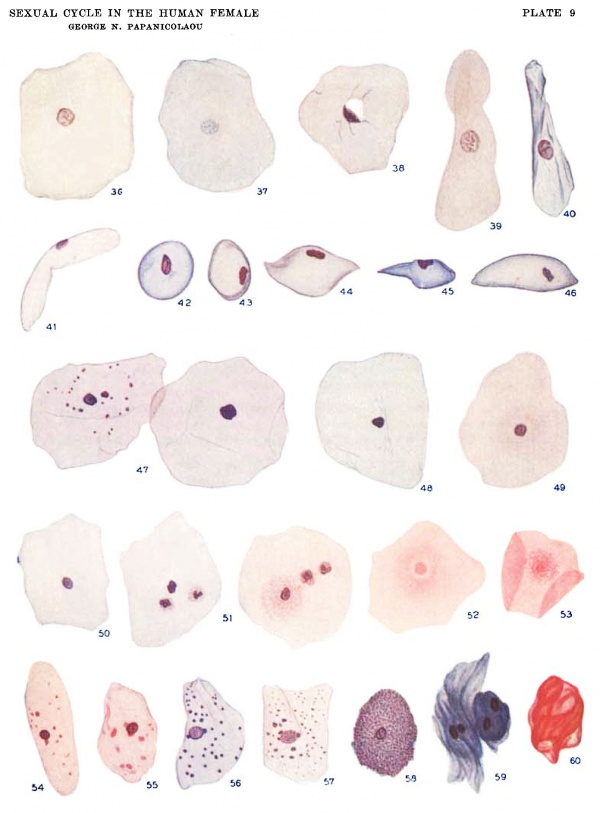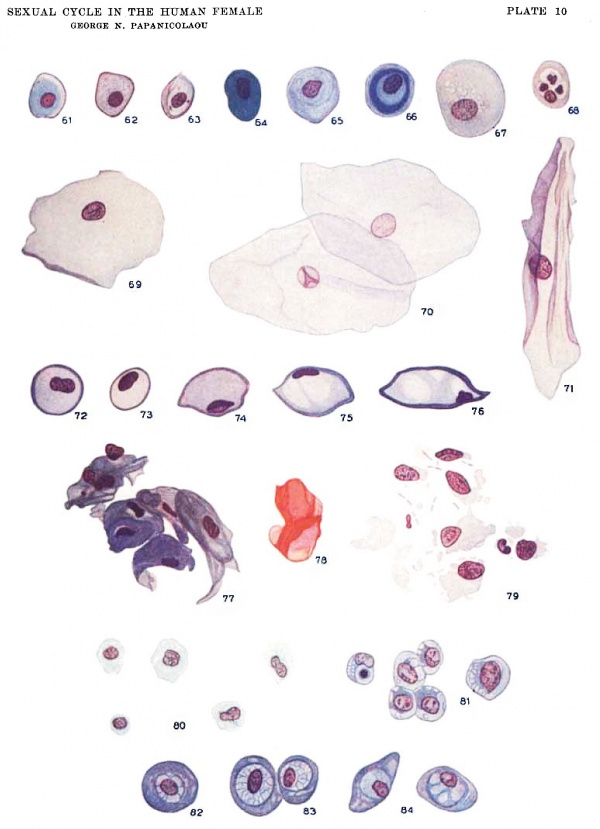Paper - The Sexual Cycle in the Human Female as revealed by Vaginal Smears
| Embryology - 2 Jun 2024 |
|---|
| Google Translate - select your language from the list shown below (this will open a new external page) |
|
العربية | català | 中文 | 中國傳統的 | français | Deutsche | עִברִית | हिंदी | bahasa Indonesia | italiano | 日本語 | 한국어 | မြန်မာ | Pilipino | Polskie | português | ਪੰਜਾਬੀ ਦੇ | Română | русский | Español | Swahili | Svensk | ไทย | Türkçe | اردو | ייִדיש | Tiếng Việt These external translations are automated and may not be accurate. (More? About Translations) |
Papanicolaou GN. The Sexual Cycle in the Human Female as revealed by Vaginal Smears. Am J Anat. 1933;52: 519–637.
| Historic Disclaimer - information about historic embryology pages |
|---|
| Pages where the terms "Historic" (textbooks, papers, people, recommendations) appear on this site, and sections within pages where this disclaimer appears, indicate that the content and scientific understanding are specific to the time of publication. This means that while some scientific descriptions are still accurate, the terminology and interpretation of the developmental mechanisms reflect the understanding at the time of original publication and those of the preceding periods, these terms, interpretations and recommendations may not reflect our current scientific understanding. (More? Embryology History | Historic Embryology Papers) |
| Online Editor |
|---|
| These are currently some of the plates from the historic paper by George Papanicolaou (1883 – 1962) the pathologist who developed the diagnostic "Pap smear" test named after him. Originally a Greek clinician (Georgios Nikolaou Papanikolaou) he travelled throughout Europe before becoming in 1913 an American researcher. His first studies were in other species (Guinea-Pig) before extending the studies onto humans. This paper described the appearance of normal cell smears during the different stages of the menstrual cycle. The true value of the "Pap smear" test was the identification of abnormal cells associated with cytopathology of cancer of the cervix.
The original black and white photomicrographs were hand-coloured by the author to match his microscopic observations. |
Plates
Plate 9
Drawings of various types of cells found in normal human vaginal smears.
- 36 to 60 Cells from human vaginal smears at different stages of the normal menstrual cycle.
Plate 10
Drawings of various types of cells found in normal human vaginal smears.
- 61 to 68 Cells from human vaginal smears at different stagesrof the normal menstrual cycle.
- 69 to 79 Characteristic types of cells found in human vaginal smears during pregnancy.
- 80 Normal mononuclears during menstruation.
- 81 Large mononuclears found in post—partum.
- 82 to 84 Cliaraeteristic types of cells found in postpartum.
Cite this page: Hill, M.A. (2024, June 2) Embryology Paper - The Sexual Cycle in the Human Female as revealed by Vaginal Smears. Retrieved from https://embryology.med.unsw.edu.au/embryology/index.php/Paper_-_The_Sexual_Cycle_in_the_Human_Female_as_revealed_by_Vaginal_Smears
- © Dr Mark Hill 2024, UNSW Embryology ISBN: 978 0 7334 2609 4 - UNSW CRICOS Provider Code No. 00098G



